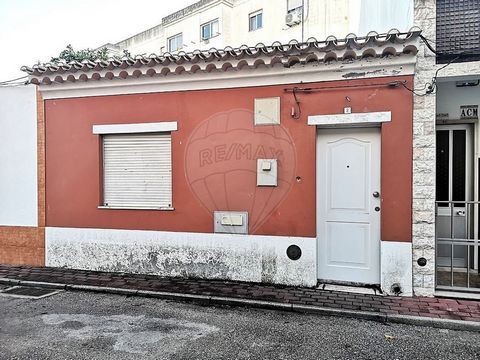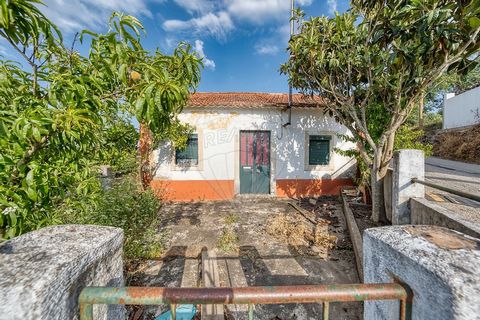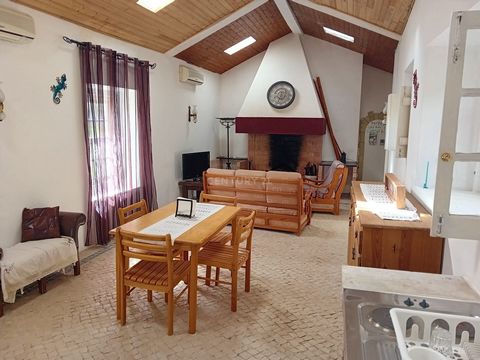Land located 1km from the Asseiceira A13 junction. 50min from Lisbon on the A1, A23. 10km from Tomar and Entroncamento. Quiet village with commerce, ATM, cafes, Citizen's Space. The Rainha Santa Building in Coimbra and Torres Vedras! Coimbra is one of the oldest cities in Portugal, with Roman, Visigothic origins and Muslim influence. Definitively conquered in 1064, it was the first capital of the kingdom when D. Afonso Henriques settled there with his court. It celebrates its Municipal holiday on July 4 in memory of Queen Santa Isabel of Aragon, patron saint of the City. In 1290, the oldest University in the country and one of the oldest in the world was created by D. Dinis. It began to operate in Lisbon and was definitively transferred to Coimbra in 1537 by order of King D. João III. Initially restricted to the Paço das Escolas, over the years the University was extended throughout Coimbra, thus modifying the landscape and making it the University City we know today. Since 2013, the University of Coimbra has been considered a UNESCO World Heritage Site, given its unique tangible and intangible heritage, essential to the history of European and World scientific culture. A privileged city for its geographical position in the center of mainland Portugal, between the cities of Lisbon and Porto and 40km from beaches. What connects Coimbra to Torres Vedras? In common with Coimbra, Torres Vedras has a medieval castle and a history that dates back to the Roman occupation. The city of Torres Vedras had its first human occupation during the Roman invasion of the Iberian Peninsula. The fortification of Torres Vedras was taken in 1148 by the forces of Dom Afonso Henriques, whose tomb is in Coimbra in the Monastery of Santa Cruz. It is said that in 1184, he resisted, for eleven days, the siege that was imposed on him in vain by a column of Muslim troops scattered throughout the region of Santarém. He later received the honours of Dom Dinis of Portugal (The Farmer) and was king of Portugal and the Algarve from 1279 until his death. Energy Rating: Exempt Land located 1km from the a13 alike node. 50min from Lisbon on the A1, A23. 10km from Tomar and the Junction. Quiet village with commerce, ATM, cafes, citizen space. The Queen Saint Building in Coimbra and Torres Vedras! Coimbra is one of the oldest cities in Portugal, with Roman, Viigothic and Muslim influences. Definitely conquered in 1064, it was the first capital of the kingdom when D. Afonso Henriques settled there with his court. She celebrates her Municipal holiday on July 4 in memory of Queen St. Elizabeth of Aragon, patron saint of the City. In 1290 it was created by D. Dinis the oldest University in the country and one of the oldest in the world. This began to work in Lisbon having been transferred permanently to Coimbra in 1537 by order of King D. João III. Initially restricted to the Paço das Escolas, over the years the University was extended to Coimbra, thus modifying the landscape and making it the University City that we know today. Since 2013, the University of Coimbra has been a UNESCO World Heritage Site given its unique and essential material and intangible heritage to the history of European and World scientific culture. Privileged city for its geographical position in the center of mainland Portugal, between the cities of Lisbon and Porto and 40km of beaches. What connects Coimbra to Torres Vedras? In common with Coimbra, Torres Vedras has a medieval castle and a history dating back to the Roman occupation. The city of Torres Vedras had its first human occupation during the Roman invasion of the Iberian Peninsula. The fortification of Torres Vedras was taken in 1148 by the forces of Dom Afonso Henriques, whose tomb is in Coimbra in the Monastery of Santa Cruz. He is said to have resisted in 1184, for eleven days, the harassment imposed on him by a column of Muslim troops scattered throughout the Region of Santarém. He later received the honors of Don Dinis of Portugal (The Farmer) having been king of Portugal and the Algarve from 1279 until his death. Energy Rating: Exempt























